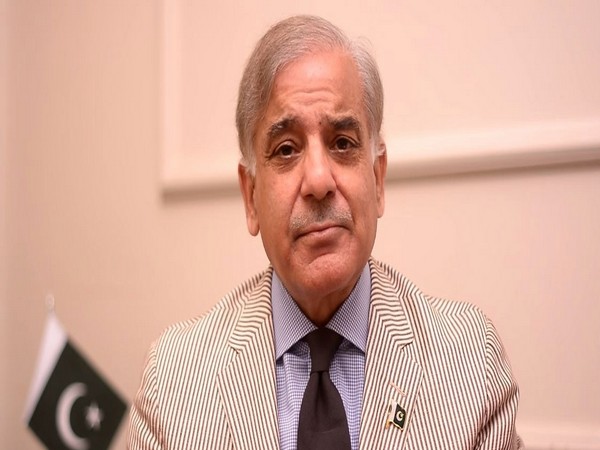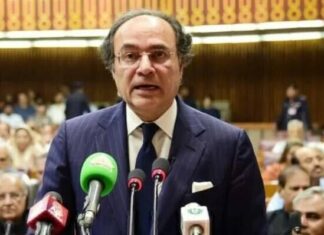Praising his own achievements and defending his rule’s constitutional credentials, the PDM-appointed Prime Minister, Shehbaz Sharif, bids farewell to his designation, as Pakistan turns 76, this independence day.
The prime minister initiated his address by passing the baton on to the interim government.
“We came into authority following the constitutional procedure, and we are relinquishing it in adherence to constitutional norms,” the prime minister conveyed to the citizens.
He extended his congratulations to Senator Anwaar-ul-Haq Kakar for his designation as the caretaker prime minister of the nation. “I am confident that… he [Kakar] will guarantee the conduct of impartial and open elections in the country,” he added.
The Prime Minister made a point of crediting his government with stabilising the economy. “Time and record will be a witness that we saved the country from possible default and consequent destruction,” he said emphasising the Stand-By Arrangement that was signed with the IMF by his government.
As Sharif sees the back of his short lived stint in the PM office, it is important to look back and see how much truth there is to his claims of being the “knight in shining armour” for the downtrodden economy of Pakistan.
When he first took charge of the office, the news of Shehbaz Sharif’s selection as the 31st Prime Minister of Pakistan in April last year was covered by The Guardian with an article titled, “Shehbaz Sharif: the diligent administrator now PM of Pakistan”. This title is reflective of the reputation Shehbaz Sharif has managed to construct over the years of being Chief Minister Punjab where his mega infrastructure projects and development schemes are symbolic to shiny badges on his lapel, each alluding to his brilliance as an administrator.
However, an exploration of Punjab’s social-economic landscape reveals that the systemic deficiencies of education and healthcare are persistent as they went severely unnoticed during Shehbaz’s tenure as CM. Such an assessment exposes an old political tactic of glossing over foundational weaknesses with tangible and short term solutions.
This contextual background is pertinent to remember in order to understand why some Policymakers and Economists may not be applauding Shehbaz Sharif’s success in curbing the very real fear of Pakistan’s default.
As soon as he joined the PM office, Junior Sharif’s term was almost immediately met with an impending fear of the country’s default as external debts for the following fiscal year rose to $25 billion USD while Pakistan’s entire foreign exchange reserves stood at a concerning $4.1 billion USD. If the default had ensued, Pakistan would have experienced an unprecedented and complete economic meltdown including severe shortages of food, medicines, fuel, and even cash. Therefore, when the PDM government managed to successfully secure an IMF loan bailout of $3 billion US, which includes the immediate disbursal of about $1.2bn in June this year, Shehbaz was quick to add another accolade to his collection.
However, similar to some precedents alluded to before, this achievement could seem superficial and weak to a few. Afterall, should we really be appreciating Shehbaz Sharif’s shiny lapel if he’s the one, who is indeed responsible for pushing the country towards a grave economic catastrophe that required a bailout in the first place? Let us explain.
There is no doubt that the events following former Prime Minister Imran Khan’s no-confidence vote left the economy in shambles with the Rupee plunging by 2% against the US dollar as well as setting nine all-time lowest levels in the interbank market against the greenback immediately after the motion unfolded. On top of that, the IMF program which was taken up by the PTI government in 2019, had immediately been halted and sabotaged, owing to the politicised subsidy on fuel provided by the then government.
However, the subsequent policies of Shehbaz’s 16 month government also made sure that the situation doesn’t get better easily. Firstly, after the deal was once reinstated, the ninth and tenth review got delayed by almost 8 months, owing to the policies of PML-N’s very own bishop Ishaq Dar who spent the first few pertinent months claiming his superiority over an IMF bailout.
However, while Dar was busy trying to formulate a spell to resolve Pakistan’s growing incapacities, the Fund called checkmate and the government inevitably signed a stand-by agreement. Taimur Jhagra, former finance minister of Khyber Pakhtunkhwa, explains the repercussions of Dar’s tunnel vision by stating that, “If the deal had been completed 8 or 9 months ago there would have been far less economic anguish. Instead Pakistan spent this time watching silently as the productivity of our industries fell, our foreign exchange reserves were depleted, and our currency took a beating”.
Additionally, short-sighted policy decisions to arouse voter support and public appreciation, such as the rejection of raising petrol prices also had serious repercussions. In April, the Oil and Gas Regulatory Authority proposed a hike in the prices of petroleum products, however, Prime Minister Shehbaz Sharif declined the recommendation on the basis that such inflation would cause “the people of the country to curse the new government.” The rejection of this proposal manifested into an additional burden of approximately Rs 30 billion Pkr on the exchequer for Pakistan simply as a result of Shehbaz’s desire to be a public favourite. Moreover, other decisions like undermining the importance of subsidies, and appointing Ishaq Dar as Finance Minister further deepened the predicament. Staying true to his handbook, Dar remained adamant in his decision to tame USD exchange rate, by hook or by crook, until Pakistan’s foreign exchange reserves almost completely ran out.
The findings of the World Bank’s report on the South Asia Economic Focus 2023, lends support to this argument as it concludes that distortive policy measures, period of exchange rate caps, import controls, and the delay in IMF’s Extended Fund Facility (EFF) programme during the PDM government are the main determinants of Pakistan’s crippling economy.
While the IMF bail out was indeed necessary to save Pakistan from a domino effect of socio-economic destruction, Shehbaz Sharif’s self-appreciation for being Pakistan’s saving grace is only a reenactment of age-old political tactics.
Placing the most ripe fruit atop a cake that is crumbling fulfils no one’s appetite, and perhaps this is a lesson that Shehbaz Sharif could learn from his short-lived experience as Pakistan’s Prime Minister.
























Now thats a good analysis. I want to further add that PML N led by PDM also brought poor governance which shook the economy.
This article was read by me! I hope you will continue to publish stuff like this for everyone to read! I’ll always be there for you!
AMAZING